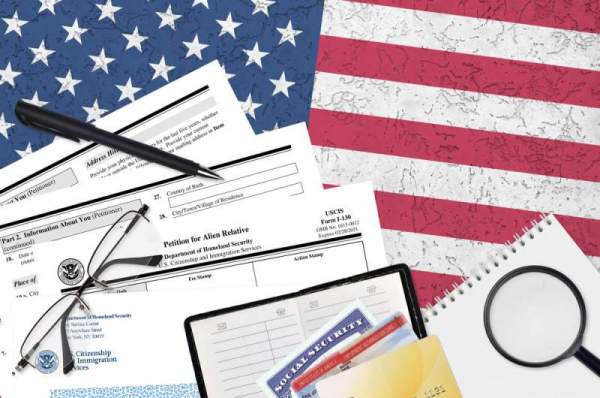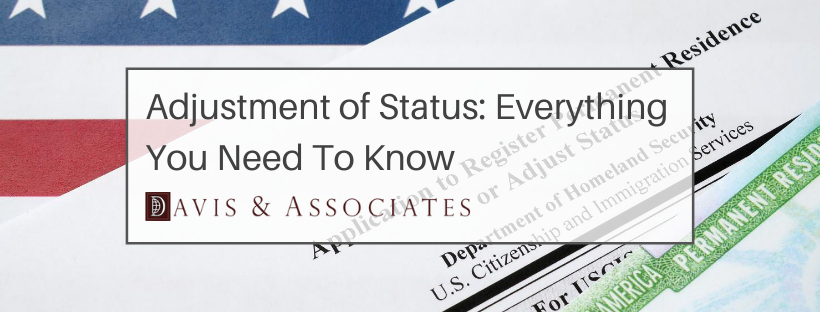Table of Contents
Obtaining a U.S. Employment-Based Green Card is a significant milestone in the lives of many foreign nationals who dream of working and living in the United States. This process can be intricate, but with the right information and guidance, it’s entirely achievable. In this comprehensive guide, we will walk you through the step-by-step application process for Employment-Based Green Cards.
Obtaining a U.S. Employment-Based Green Card is a dream that symbolizes new opportunities, professional growth and the prospect of a more secure future in the United States. It’s a journey that many foreign nationals embark upon, driven by their ambitions and the allure of the American dream. While the path to securing this coveted status may seem daunting, it’s important to remember that with the right information, preparation and guidance, it is entirely achievable.
This comprehensive guide aims to serve as your roadmap, providing clarity and direction through every twist and turn of the application process for Employment-Based Green Cards. It’s designed to be your trusted companion, demystifying the complexities and intricacies that often surround immigration procedures. Whether you are a highly skilled professional seeking to contribute your expertise to the U.S. job market, an entrepreneur with dreams of launching your business on American soil or an individual with a unique skill set that aligns with the criteria, this guide is tailored to offer you valuable insights and a clear path toward your goal.
We understand that the journey to securing an Employment-Based Green Card is not just a legal process; it’s a personal and life-altering endeavor. It represents your commitment, dedication and aspiration to become an integral part of the American fabric. We invite you to delve deeper into this guide, where we will break down each step, answer your questions and provide the guidance you need to successfully navigate this transformative journey. Together, let’s embark on this path toward realizing your American dream.
Should you desire more in-depth information, it’s available for your perusal on this page: Form I-485, Instructions for Application to Register Permanent …
Step 1: Determine Eligibility
Before you begin the application process, you must ascertain your eligibility. Employment-Based Green Cards are typically available in several categories, including EB-1 (priority workers), EB-2 (professionals with advanced degrees), EB-3 (skilled workers and professionals) and EB-5 (investors). Your eligibility will depend on your qualifications and the category that best fits your situation.
Before you begin the application process, you must ascertain your eligibility. Employment-Based Green Cards are typically available in several categories, including EB-1 (priority workers), EB-2 (professionals with advanced degrees), EB-3 (skilled workers and professionals) and EB-5 (investors). Your eligibility will depend on your qualifications and the category that best fits your situation. Here’s a closer look at each category:
EB-1 (Priority Workers): This category is designed for individuals with extraordinary abilities in fields such as science, art, education, business or athletics, outstanding professors and researchers and multinational managers or executives. To qualify, you must have a substantial record of achievement in your field.
EB-2 (Professionals with Advanced Degrees): This category is for professionals with advanced degrees or individuals with exceptional abilities in their respective fields. You may also qualify if your work significantly benefits the United States and you have a job offer from a U.S. employer. Labor certification and a job offer are typically required.
EB-3 (Skilled Workers and Professionals): EB-3 is for skilled workers, professionals and other workers in positions that require at least two years of experience or training. Labor certification is typically required and you must have a job offer from a U.S. employer.
EB-5 (Investors): If you are willing to invest a significant amount of capital into a new commercial enterprise that creates jobs for U.S. workers, you may be eligible for the EB-5 program. There are specific investment and job creation requirements in this category.
To determine your eligibility:
Assess Your Qualifications: Evaluate your educational background, work experience and achievements to see which category aligns best with your profile.
Consult an Immigration Attorney: An immigration attorney can provide personalized guidance and help you understand the specific requirements for your chosen category. They can also assist with gathering the necessary documentation and preparing your application.
Secure a Job Offer: In many cases, you will need a job offer from a U.S. employer to apply for an employment-based green card. Ensure that the job aligns with the requirements of your chosen category.
Understand the Process: Familiarize yourself with the application process, including any labor certification requirements or petition filing procedures. The process can vary depending on the category and your individual circumstances.
Prepare Supporting Documents: Gather all necessary supporting documents, such as academic transcripts, work certificates and letters of recommendation, to demonstrate your eligibility.
Stay Updated: Immigration laws and regulations can change over time. Stay informed about any updates or changes that may affect your application process.
Determining your eligibility and selecting the most appropriate employment-based green card category is a crucial first step in pursuing permanent residency in the United States. By thoroughly assessing your qualifications and seeking professional guidance when needed, you can navigate the application process with confidence and increase your chances of success.
Explore this link for a more extensive examination of the topic: Form I-765, Instructions for Application for Employment Authorization

Step 2: Secure a Job Offer
In most cases, you’ll need a job offer from a U.S. employer to initiate the Green Card process. Your employer may be required to go through a labor certification process to demonstrate that there are no qualified U.S. workers available for the position.
In most cases, you’ll need a job offer from a U.S. employer to initiate the Green Card process. This requirement underscores the importance of a genuine employment opportunity as a pathway to lawful permanent residency in the United States, creating a symbiotic relationship between foreign workers and U.S. employers.
Your employer’s role in the Green Card process often involves more than just offering you a job. They may be required to go through a labor certification process, also known as the PERM (Program Electronic Review Management) process. This step is designed to demonstrate that there are no qualified U.S. workers available for the position you’ll be filling. This serves to protect the interests of the American workforce by ensuring that foreign workers are only brought in when there is a genuine shortage of qualified domestic talent.
The labor certification process involves meticulous recruitment efforts by the employer, advertising the job opportunity in various channels and conducting a thorough search for potential U.S. candidates. This diligence ensures that the Green Card process respects the principle of providing opportunities to U.S. workers first, which is a foundational element of the U.S. immigration system.
By requiring a job offer and labor certification, the Green Card process not only serves the interests of foreign workers seeking better opportunities in the U.S. but also safeguards the job market for U.S. citizens and permanent residents. It reflects the careful balance in the immigration system, where talent and skill are valued and opportunities are extended to both American and foreign workers, contributing to a diverse and robust workforce that drives the nation’s prosperity and innovation.
For additional details, consider exploring the related content available here Green Card for Employment-Based Immigrants | USCIS

Step 3: File the Immigrant Petition
Once you have a job offer, your employer will file an immigrant petition on your behalf. The form and category will depend on your employment type, such as Form I-140 for most employment-based categories. This step establishes your eligibility for the Green Card.
Securing a job offer in the United States is often the crucial first step towards obtaining a Green Card and achieving lawful permanent residency. Here’s an extended perspective on the process that follows after receiving a job offer:
Understanding the Immigrant Petition: Once you have a job offer from a U.S. employer, the next important milestone is the filing of an immigrant petition on your behalf. The specific form and category of this petition will depend on your employment type and eligibility. For most employment-based categories, Form I-140, Immigrant Petition for Alien Worker, is the standard document used.
Employer’s Role: Your prospective employer plays a pivotal role in this process. They are responsible for initiating the immigrant petition and it is their way of formally indicating their intent to employ you on a permanent basis. Employers must meet certain requirements and demonstrate the availability of a job opportunity for you.
Proving Eligibility: The immigrant petition serves as a key document to establish your eligibility for a Green Card. It confirms that you meet the specific criteria for the employment-based category you are applying under. This typically involves demonstrating your qualifications, skills, work experience and the relevance of your job to the U.S. labor market.
Priority Date: The date your employer files the immigrant petition on your behalf is known as your “priority date.” This date is crucial, especially in employment-based categories subject to numerical limitations. It determines your place in the visa queue and is used to determine when you can move forward with your Green Card application.
Waiting Period: Depending on the employment-based category and your country of chargeability, you may encounter waiting periods associated with visa availability. Some categories have limited visa numbers available each fiscal year, which can result in backlogs and waiting for your priority date to become “current” in the Visa Bulletin.
Adjustment of Status or Consular Processing: Once your priority date is current, you have two primary options for further processing: adjustment of status (AOS) or consular processing. AOS is conducted within the United States if you are eligible and can allow you to stay in the U.S. while your Green Card application is pending. Consular processing involves attending an immigrant visa interview at a U.S. embassy or consulate abroad.
Supporting Documentation: Along with the immigrant petition, you will need to prepare a comprehensive package of supporting documentation, which may include educational credentials, work experience records, financial documentation and medical examinations, among others. These documents help establish your eligibility for the Green Card.
Navigating the Complexities: The Green Card application process can be complex, involving numerous forms, fees and specific requirements. It’s advisable to seek legal counsel or professional guidance to ensure that your application is accurate and complete, reducing the risk of delays or denials.
Employment and Stability: Throughout this process, it’s crucial to maintain your employment with the sponsoring employer and fulfill any requirements associated with your specific employment-based category. Changing employers or job roles can impact your Green Card application.
Long-Term Perspective: Securing a Green Card through employment is a significant milestone that offers long-term stability in the United States. It’s essential to approach this process with a long-term perspective and be prepared for potential waiting periods and adjustments in your career and life plans.
In summary, obtaining a job offer in the United States and having your employer file an immigrant petition on your behalf is a significant step towards acquiring a Green Card. It’s a multi-step process that involves careful documentation, adherence to immigration regulations and an understanding of the unique requirements of your employment category. Navigating this journey effectively can open the door to lawful permanent residency in the United States and a brighter future.
To delve further into this matter, we encourage you to check out the additional resources provided here: The Employment-Based Green Card: Your Comprehensive Step-by …

Step 4
Wait for Priority Date and Visa Bulletin
The U.S. government limits the number of Employment-Based Green Cards available each year, which can create a backlog. Your priority date (the date USCIS receives your Form I-140) will determine when you can move forward. Keep an eye on the Visa Bulletin, which provides updates on the current priority dates and the availability of Green Cards in your category.
Navigating the path to an Employment-Based Green Card in the United States often involves a crucial waiting game, contingent on two vital elements: your priority date and the information provided by the Visa Bulletin. Understanding how these factors work together is key to managing expectations and planning for your future in the country.
1. The Significance of the Priority Date: Your priority date marks the initiation of your green card journey. It is determined by the date USCIS receives your Form I-140 or other relevant petitions. This date becomes your place in line, akin to a reservation for a limited resource. The U.S. government allocates a set number of Employment-Based Green Cards annually and this allocation can vary based on visa category and country of chargeability.
2. The Waiting Period: Due to the annual limits and high demand, many applicants find themselves in a waiting period after their priority date is established. This waiting period can range from several months to several years, depending on the visa category and your country of chargeability. During this time, you’ll need to wait for your priority date to become current before you can proceed with the next steps in your green card application.
3. Monitoring the Visa Bulletin: The Visa Bulletin is your beacon of hope and progress during this waiting period. It is published monthly by the U.S. Department of State and provides critical updates on the availability of Green Cards in each employment-based visa category. It categorizes applicants based on their priority dates and country of chargeability, indicating whether they can proceed with the final stages of their green card application.
4. Advancing Toward Your Goal: As the Visa Bulletin advances your priority date, you move closer to the ultimate goal of obtaining your Employment-Based Green Card. It is essential to regularly check the Visa Bulletin to stay informed about your eligibility to file the final application forms, such as Form I-485 (Application to Register Permanent Residence or Adjust Status).
5. Strategic Planning: Managing your green card journey effectively requires strategic planning. If you anticipate a lengthy waiting period based on your priority date, it’s crucial to maintain your immigration status, renewing your temporary visas as needed and ensuring compliance with U.S. laws and regulations.
6. Seeking Legal Guidance: The complexities of priority dates, visa categories and immigration laws often necessitate legal counsel. Consulting with an immigration attorney can provide you with personalized guidance, helping you navigate the nuances of your specific situation and optimize your chances of success.
In summary, the waiting period determined by your priority date and the guidance provided by the Visa Bulletin are integral aspects of the Employment-Based Green Card process. While the wait can be challenging, it’s essential to stay patient, informed and proactive throughout your journey. By understanding the significance of your priority date and monitoring the Visa Bulletin diligently, you can better navigate the path to permanent residency in the United States.
To delve further into this matter, we encourage you to check out the additional resources provided here: The Employment-Based Green Card: Your Comprehensive Step-by …

Step 5: Adjustment of Status or Consular Processing
Once your priority date becomes current, you can proceed with either Adjustment of Status (if you are in the U.S.) or Consular Processing (if you are outside the U.S.). Adjustment of Status is the process of applying for your Green Card while remaining in the U.S., while Consular Processing requires you to attend an interview at a U.S. embassy or consulate abroad.
“Understanding the options available to you once your priority date becomes current is pivotal in navigating the complex journey toward obtaining a U.S. Green Card. Let’s delve deeper into the two main avenues: Adjustment of Status and Consular Processing and explore the considerations that come with each:
1. Adjustment of Status (AOS):
Staying in the U.S.: One of the primary advantages of choosing AOS is that you can remain in the United States throughout the process. This means you can continue your work, studies or daily life without the need to leave the country.
Family Unity: AOS allows you to stay close to your family members who may also be in the U.S. This can be particularly important for families with mixed immigration statuses.
Easier Transition: For individuals who have already been living in the U.S. on a non-immigrant visa (like an H-1B or F-1 visa), AOS offers a more seamless transition to permanent residency without the need to navigate the consular process.
Potential for Employment Authorization: While your AOS application is pending, you may be eligible to apply for an Employment Authorization Document (EAD), which can provide work authorization while you wait for your Green Card.
Closer Access to Legal Resources: Being in the U.S. means you have closer access to legal resources and assistance should you encounter any issues or complications during the application process.
2. Consular Processing:
Scheduled Interview Abroad: Consular Processing involves attending an interview at a U.S. embassy or consulate in your home country or another country where you have a legal presence. This can be logistically challenging and may require international travel.
Temporary Separation: Opting for Consular Processing may involve temporary separation from your family members who are already in the U.S. They will remain while you attend the interview abroad.
More Stringent Medical Examination: The medical examination required for Consular Processing is typically more stringent and any medical issues could potentially delay or complicate the process.
Potential for Delays: The consular process may involve longer wait times due to scheduling constraints at the embassy or consulate and potential security clearances.
Establishing Strong Ties: While it may be more challenging, Consular Processing allows you to re-establish ties to your home country, which can be advantageous for individuals with strong family, professional or personal connections there.
Ultimately, the choice between Adjustment of Status and Consular Processing will depend on your individual circumstances, such as your current location, immigration status, family situation and personal preferences. It’s crucial to consult with an immigration attorney or expert to evaluate your options and make an informed decision. Whichever path you choose, the goal remains the same: achieving permanent residency in the United States and taking the next step toward realizing your American dream.”
Additionally, you can find further information on this topic by visiting this page: Green Card Processes and Procedures | USCIS

Step 6
Attend a Medical Examination and Biometrics Appointment
As part of the application process, you will need to undergo a medical examination by a USCIS-approved civil surgeon and attend a biometrics appointment to provide fingerprints, photographs and other relevant information.
Attend a Medical Examination and Biometrics Appointment
As part of the application process, you will need to undergo a medical examination by a USCIS-approved civil surgeon and attend a biometrics appointment to provide fingerprints, photographs and other relevant information.
The medical examination is a critical step in ensuring that you meet the health requirements necessary for immigration. A designated civil surgeon will assess your physical condition and evaluate your medical history. This examination not only verifies your eligibility for immigration but also safeguards public health within the United States.
The biometrics appointment is equally important as it helps establish your identity and background information. During this appointment, your fingerprints and photographs will be captured, which will be used for various security and identity verification purposes throughout the immigration process. It’s essential to attend this appointment as scheduled, as any delays may result in processing setbacks.
By actively participating in these two appointments, you demonstrate your commitment to the immigration process and contribute to the overall security and efficiency of the system. Completing these requirements in a timely and thorough manner brings you one step closer to achieving your immigration goals and realizing your American dream.
Explore this link for a more extensive examination of the topic: Form I-485, Instructions for Application to Register Permanent …

Step 7: Attend the Green Card Interview
In some cases, you and your family members (if applicable) will be required to attend an interview at a USCIS office. The interview aims to verify the information provided in your application and assess your eligibility for a Green Card.
Attending an interview at a USCIS (U.S. Citizenship and Immigration Services) office is a crucial step in the immigration process, especially when seeking a Green Card. This in-person meeting serves multiple important purposes, ensuring the integrity of the immigration system and granting eligible individuals the opportunity to become permanent residents in the United States.
Verification of Application Information: The primary objective of the interview is to verify the accuracy and completeness of the information provided in your immigration application. USCIS officers will go through your forms and documents meticulously to ensure consistency and truthfulness in your statements. This verification process helps maintain the credibility of the immigration system.
Assessment of Eligibility: USCIS officers use the interview as an opportunity to assess your eligibility for a Green Card. They will examine your background, criminal history and immigration history to determine whether you meet the requirements for permanent residency. This thorough evaluation helps guarantee that Green Cards are granted to individuals who are genuinely eligible.
Family Members’ Roles: If applicable, your family members who are also applying for Green Cards will be expected to attend the interview with you. This is especially important in cases of family-sponsored immigration or when multiple family members are applying together. It allows USCIS officers to confirm the familial relationships and the consistency of information across all applications.
Language Proficiency: During the interview, you may be required to demonstrate your proficiency in English or provide proof of your exemption from this requirement. Proficiency in English is often necessary for obtaining a Green Card, as it facilitates successful integration into American society and the workforce.
Cultural and Civic Knowledge: In some instances, you may be tested on your knowledge of U.S. history and government. This is part of the citizenship assessment and may not apply to Green Card applicants. However, it’s essential to be aware of the various requirements that may arise during the interview process.
Clarification and Additional Documentation: The interview also offers an opportunity to clarify any doubts or questions the USCIS officer may have about your application. They might request additional documentation or seek further explanations regarding certain aspects of your case. Being prepared with the necessary documents and information is crucial to a successful interview.
Behavior and Demeanor: USCIS officers assess your behavior and demeanor during the interview. Being courteous, respectful and honest can make a positive impression on the officer and may influence their decision. It’s essential to approach the interview with professionalism and a cooperative attitude.
Timeline and Next Steps: At the conclusion of the interview, the USCIS officer may provide you with information regarding the next steps in your immigration process. This could include details on when to expect a decision, additional requirements or any follow-up actions required from your end.
In summary, attending a USCIS interview for your Green Card application is a pivotal step in the immigration journey. It not only ensures the accuracy of the information provided but also confirms your eligibility to become a permanent resident. By approaching the interview with preparation, honesty and a cooperative attitude, you can increase your chances of a successful outcome and take a significant step toward achieving your American dream.
If you’d like to dive deeper into this subject, there’s more to discover on this page: The Employment-Based Green Card: Your Comprehensive Step-by …

Step 8: Receive Your Green Card
If your application is approved, you will receive your Employment-Based Green Card. Congratulations, you have successfully navigated the complex process and are now a lawful permanent resident of the United States!
Receiving approval for your Employment-Based Green Card is a significant milestone in your immigration journey, marking the culmination of your determination and perseverance. This achievement brings with it a wealth of opportunities and a sense of security that comes with lawful permanent residency in the United States. Here’s what this momentous occasion means and what lies ahead:
Legal Permanent Resident Status: With your Employment-Based Green Card, you are granted legal permanent resident status in the United States. This status affords you certain privileges, including the ability to live and work in the U.S. without time restrictions.
Path to U.S. Citizenship: For many, obtaining a green card is a vital step on the path to U.S. citizenship. As a green card holder, you can eventually apply for naturalization and enjoy the full benefits of American citizenship, including voting rights and the ability to sponsor family members.
Freedom and Flexibility: Your green card offers you a level of freedom and flexibility that non-immigrant visa holders do not have. You can choose your place of residence, change jobs and pursue various opportunities without the constraints associated with temporary visas.
Family Reunification: As a lawful permanent resident, you may be eligible to sponsor certain family members for their green cards, allowing you to reunite with loved ones in the United States.
Access to Social Services: You become eligible for various social services, such as healthcare, education and certain retirement benefits. Your green card status provides a sense of security for your future in the United States.
Contributing to the U.S. Economy: Many employment-based green card holders have specialized skills and expertise that contribute to the U.S. economy and workforce. Your contributions are valued and your lawful permanent resident status is a testament to your role in the nation’s growth and prosperity.
Obligations and Responsibilities: As a green card holder, you have certain responsibilities, such as complying with U.S. laws and filing taxes. It’s essential to stay informed about these obligations to maintain your status and enjoy the benefits it provides.
Continuous Journey: While obtaining your green card is a significant achievement, your journey is far from over. Green cards typically come with conditions that may require removal after a specific period. Staying informed about these conditions and fulfilling any requirements is crucial.
In conclusion, receiving your Employment-Based Green Card is a remarkable achievement that opens doors to a brighter future in the United States. It is a testament to your dedication, skills and contributions to the country. As a lawful permanent resident, you are not only a part of the American fabric but also an embodiment of the nation’s enduring promise of opportunity and freedom. Embrace this new chapter in your life and continue to pursue your dreams and aspirations in the land of endless possibilities. Congratulations on your success!
You can also read more about this here: Green Card for Employment-Based Immigrants | USCIS

Obtaining an Employment-Based Green Card is a significant achievement and a testament to your skills and contributions to the U.S. job market. While the application process can be lengthy and complex, following this step-by-step guide can help you understand and navigate each stage effectively. Additionally, consulting with an immigration attorney or advisor can provide valuable insights and assistance to ensure a successful Green Card application. Remember, persistence and preparation are key to achieving your American dream.
Securing an Employment-Based Green Card is a noteworthy milestone, underscoring your proficiency and valuable contributions to the U.S. job market. Acknowledging the potential length and complexity of the application process, this detailed step-by-step guide is designed to be your roadmap, enabling a clear understanding of each stage and empowering you to navigate it with precision.
Furthermore, seeking guidance from an immigration attorney or advisor is highly advisable. Their expertise can shed light on intricate nuances, potential challenges and optimal strategies to ensure a smooth and successful Green Card application. Embrace the idea that persistence and thorough preparation will be your strongest allies on this journey toward realizing your American dream. Stay resolute, stay prepared—victory in this pursuit is within reach.
For additional details, consider exploring the related content available here Employer Sponsored Green Card: Step-by-Step Guide
More links
For additional details, consider exploring the related content available here Green Card for Employment-Based Immigrants | USCIS
